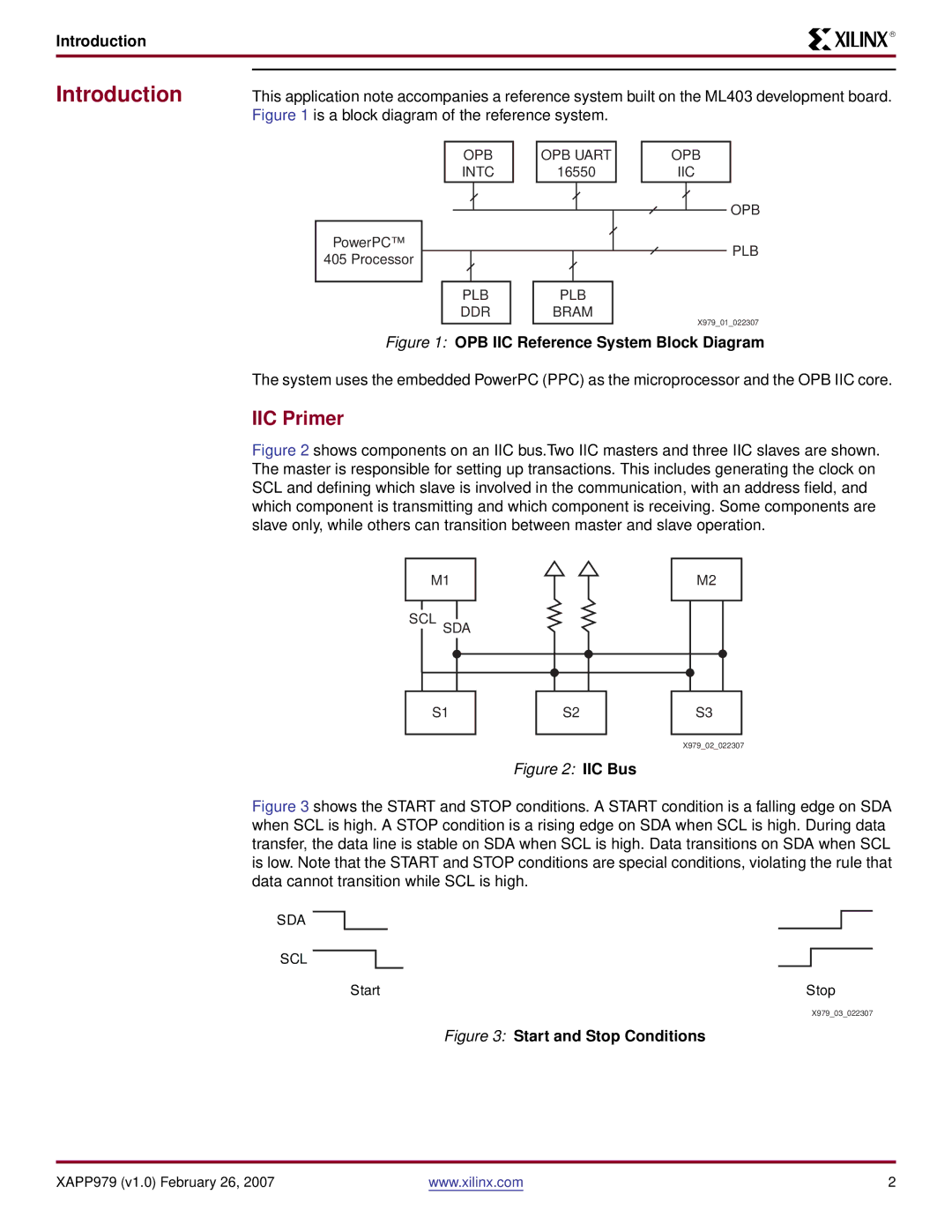
Introduction
R
Introduction
This application note accompanies a reference system built on the ML403 development board. Figure 1 is a block diagram of the reference system.
OPB |
| OPB UART |
| OPB |
INTC |
| 16550 |
| IIC |
PowerPC™
405 Processor
OPB |
PLB |
PLB
DDR
PLB
BRAM
X979_01_022307
Figure 1: OPB IIC Reference System Block Diagram
The system uses the embedded PowerPC (PPC) as the microprocessor and the OPB IIC core.
IIC Primer
Figure 2 shows components on an IIC bus.Two IIC masters and three IIC slaves are shown. The master is responsible for setting up transactions. This includes generating the clock on SCL and defining which slave is involved in the communication, with an address field, and which component is transmitting and which component is receiving. Some components are slave only, while others can transition between master and slave operation.
M1
SCL SDA
|
|
|
|
|
|
|
|
|
|
|
|
|
|
|
|
|
|
| S1 |
| S2 | ||
|
|
|
|
|
|
M2
S3
X979_02_022307
Figure 2: IIC Bus
Figure 3 shows the START and STOP conditions. A START condition is a falling edge on SDA when SCL is high. A STOP condition is a rising edge on SDA when SCL is high. During data transfer, the data line is stable on SDA when SCL is high. Data transitions on SDA when SCL is low. Note that the START and STOP conditions are special conditions, violating the rule that data cannot transition while SCL is high.
SDA
SCL
Start | Stop |
X979_03_022307
Figure 3: Start and Stop Conditions
XAPP979 (v1.0) February 26, 2007 | www.xilinx.com | 2 |
